Article
Minneapolis' Memories Part 3: Minnesota's Largest City Holds on to Its History
Author(s):
There’s something cheerless about how a city gets developed and immediately the big upscale hotels start building to have a presence. That isn’t an issue in Minneapolis.
There’s something cheerless about how a city gets developed and immediately the big upscale hotels start building to have a presence. That isn’t an issue in Minneapolis. You have choices, a spanking new hotel, in the Mall of America, for example, one of two including the Radisson Blu. And yet, although they are magnificent, they impress rather than charm; they are not as cozy as hotels with a history. New hotels are seldom as interesting as grandmother’s house!
- Related: Minneapolis’ Memories Part 1 & Part 2
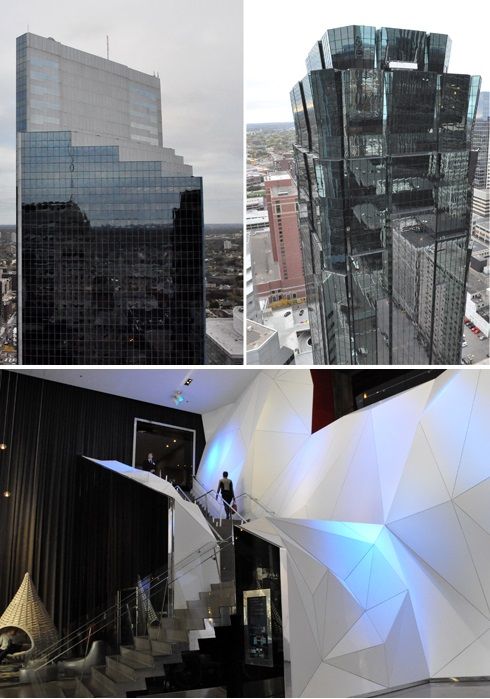
High rises photographed from the W Hotel Foshay; one of the lobbies of the Radisson Blu in the Mall of America.
The 32 story-tall W Foshay at 821 Marquette surely is different. The Foshay Tower was built by entrepreneur Wilbur Foshay in 1929. It was the first skyscraper in Minnesota and the tallest in Minneapolis until 1972. The grand opening had 25,000 guests and “semi-nude dancers entertained the guests who sported gold pocket watches as party favors.” John Philip Sousa composed a march for the occasion. He played it once then canceled the arrangement as Foshay’s $20,000 check bounced! Two months later, Foshay’s business was in receivership and two years later, he was sentenced to federal prison and his cry, “Get rich with Foshay!” faded from the scene. His first trial was described as having a “near-football game atmosphere” where pickpockets worked the crowd. The Foshay Tower was placed on the National Register of Historic Places in 1977 and reopened as the renovated W Minneapolis in 2008.
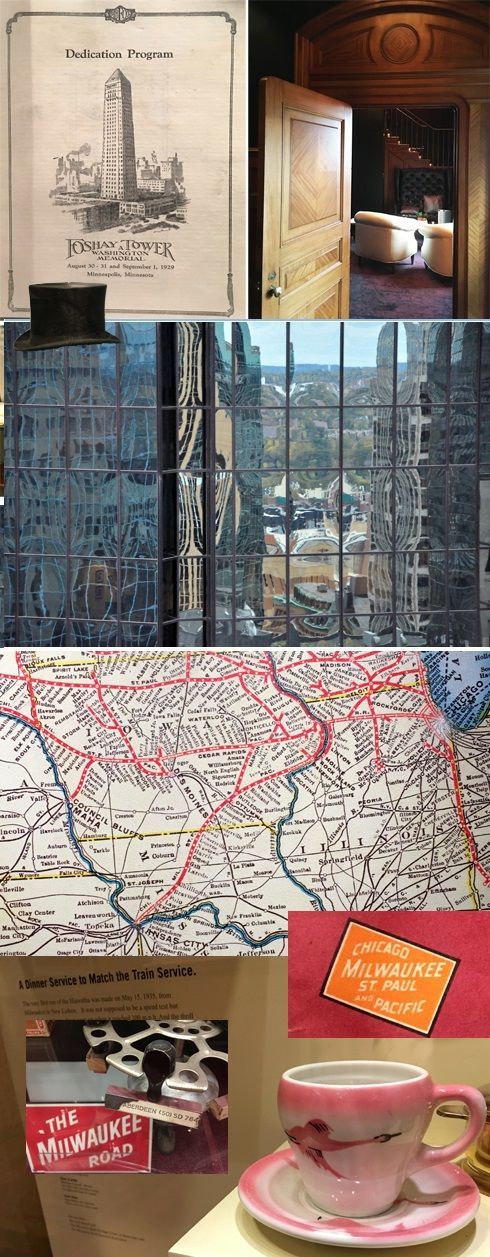
Top right: Foshay’s study: the 27th floor is now called the “Prohibition Bar.” The surrounding skyscrapers mirror the elegance and hubris of the tallest high rise in Minnesota. [Insert Beaver fur hat 1929 worn by Edward Haglin, general contractor at the opening celebration.] The historical Renaissance Minneapolis Hotel, The Depot, was the former train station. The density of the rail routings show how significant train travel was in the early 19th century. And how elegant, even a cup of tea if you traveled then by train.
The Renaissance Minneapolis Hotel, The Depot at 225 South Third Avenue tells you up front that you are in a former train station. You have a choice; either the traditional suites with high ceilings and every comfort or a more recently created suite with a more modern design. We chose traditional and were very happy with it.

The Conductor, checking the time on his pocket watch, is one of the “ghostly white statues of special guests” that stand in the lobby to remind us of the past. Their stories have been written and can be read beside the statue or here. Many train posters hang on the hotel walls, reminding us of a more innocent time.
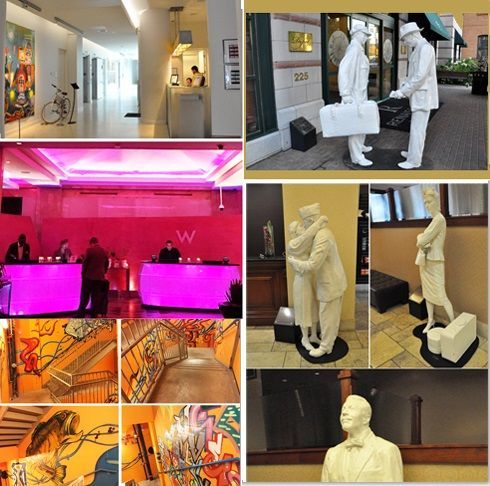
Yes, the Minneapolis hotels can be different. The former Chambers Hotel, now privately owned as Le Meridien, has collected art for 10 years and has more than 200 paintings on its walls or in its wars. Top left shows the lobby and, beyond the piece of art that is a bicycle, lies the door to the stairway. Bottom left: are the stairs that go up the stairwell. You would always know and remember your floor! Left middle image is the lobby of the W Foshay hotel. Right: more of the Depot Ghosts. Top: Traveling Men. Kissing Couple. Woman Traveler. Charley.
Restaurants are easier to deal with than hotels. The financial investment is less and you can make up your mind quickly and walk out if it doesn’t meet your expectations. Restaurants are easier to judge, too, because if they are long-established, it’s probably proven itself. We had a great lunch at the Monte Carlo, established 1906. I asked our elderly waiter how long he had waited tables here. He replied, “Longer than I care to think.”
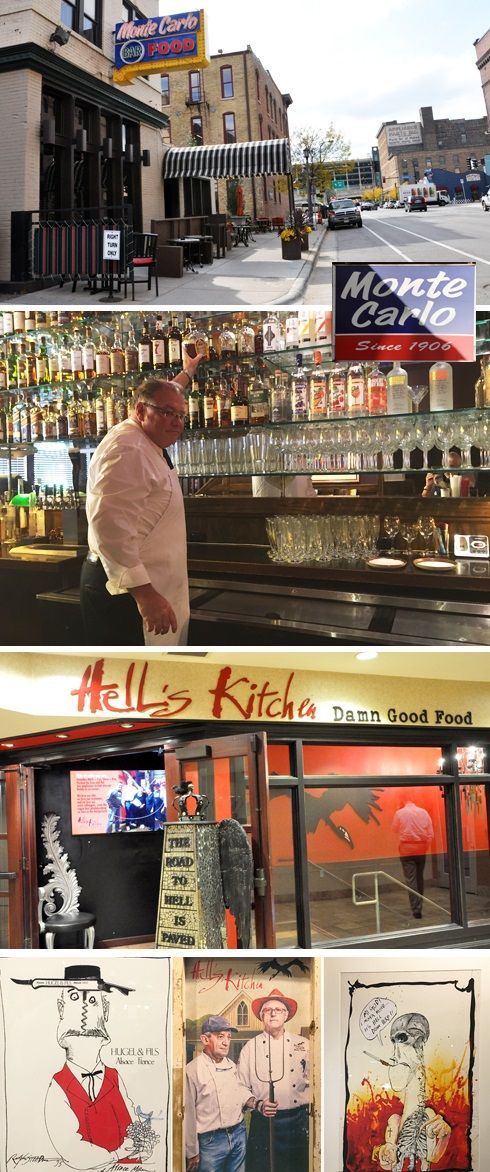
Top: The Monte Carlo is at 219 3rd Ave North in the Warehouse District near Target Field — and if you’ve been serving meals for 110 years, you must be pretty good. Another restaurant carries the legend Damn Good Food and that has to be meaningful even if the words were uttered by its chef owners, the late Mitch Omer and his long-time partner Steve Meyer. They opened Hell’s Kitchen in 2002, confident that they were doing a good job. Hell’s Kitchen at 80 South 9th Street is popular, busy, and successful. Most of its products are cooked from scratch using local farmers. It doesn’t take itself too seriously. It is camp, with Gothic art and is a fun place for both customers and staff. Everyone says those women running the restaurant are great people, they care for the community and give gift cards to nonprofits and their food scraps to a pig farm. Their Bloody Mary’s and homemade peanut butter “are evidently to die for.” Recently, when something went wrong with a Valentine’s Day event, the owners gave everyone a $100 gift card.
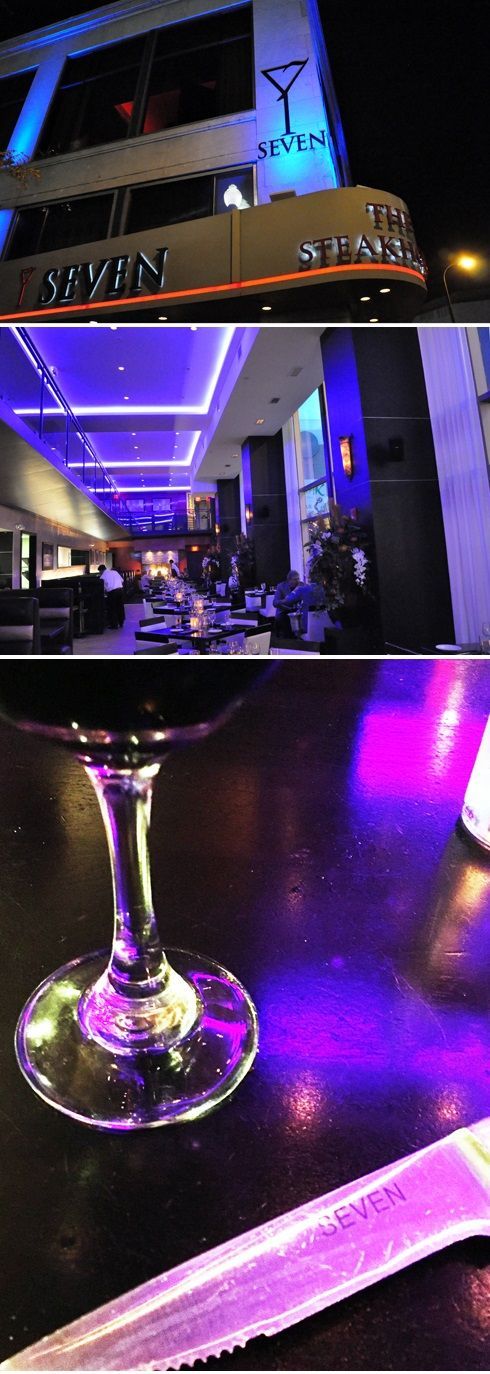
Seven’s address is easily remembered at 700 Hennepin Avenue, one of the main drags in downtown Minneapolis. It stands on the corner of the street beside Pantages Theater. David and Alexus Koch bought Seven eight years ago. When neighbor, Pantages Theatre, decided to spend $14 million to upgrade, the Kochs decided to spend $8 million themselves to create their upscale restaurant Seven — now a multilevel steakhouse, sushi lounge, and rooftop sky bar. It offered sophisticated dining and we found it perfect for the dinner that was our farewell to Minnesota’s largest city.
*All photography by the authors
The Andersons, who live in San Diego, are the resident travel & cruise columnists for Physician's Money Digest. Nancy is a former nursing educator, Eric a retired MD. The one-time president of the NH Academy of Family Physicians, Eric is the only physician in the Society of American Travel Writers. He has also written five books, the last called The Man Who Cried Orange: Stories from a Doctor's Life.




